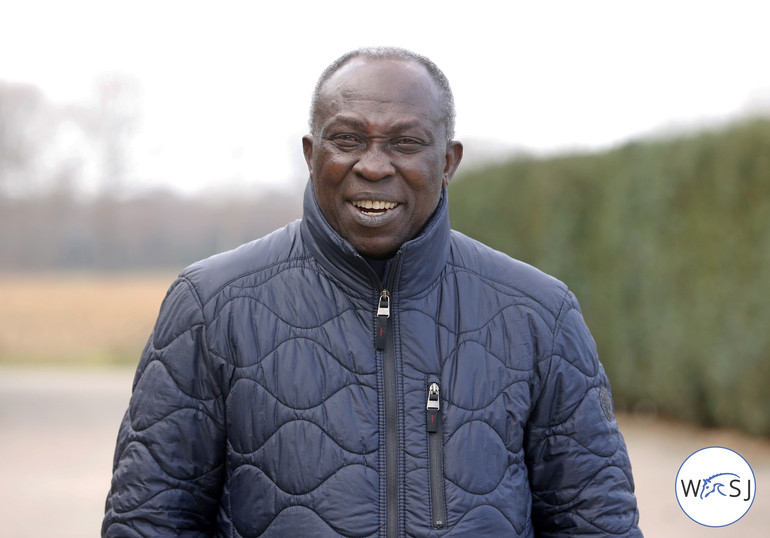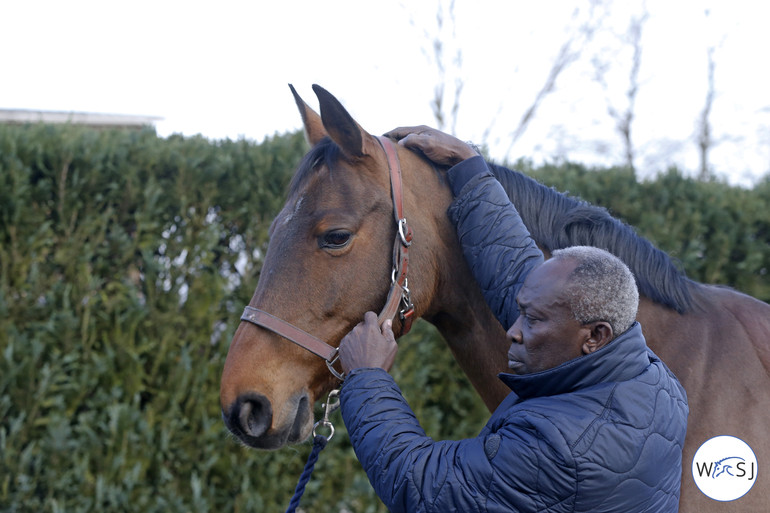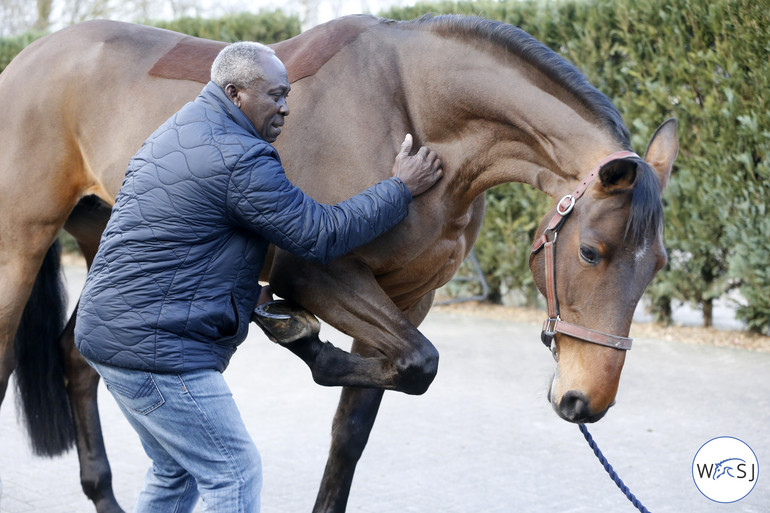World of Showjumping’s most read interview in 2017 was the one with osteopath George Oduro, who is taking care of the jumping world's four-legged super stars – assisting no less than fifteen nations during the Olympic Games in Rio de Janeiro in 2016.
Now George is back to give our readers some general tips on how to make a horse feel better, as well as giving advice about three things that you can do yourself to help your horse – every day.
George himself starts by looking at a horse while it is walking on a straight line, observing how the different parts of the horse-body work together. “I’m looking for all the components, the anatomic itself and how they are moving. All the anatomic are connected to each other. If it stops working in one place you can see where the problem is, you don’t have to trot the horse to see that. Already when the horse takes its first steps I have an idea about where the issue is. I start watching the combinations, and look at the joints. When the horse is lame, the problem doesn’t have to be in that leg – it often comes from somewhere else. You have to find the original problem so you don’t just treat the symptom.”
George says that with a lot of training this is something anyone can learn to see. “Look at how the body moves and how all the moving objects are appointed to each other. How the whole body is combining. For example, are the front legs moving good and the hind legs just walking with?”
“I want the shoulders to move forwards and not just push forward. Then I look at the muscles over the ribs, they should be relaxed and be moving. If they don’t do that, they are blocked. I also look for the horse to walk straight, and that the hind legs open and rise from the ground and not just follow the front legs.”
Of course there are horses that aren’t perfectly build and they might move a bit differently. “Sometimes horses are built in a way so that they don’t walk totally straight, but this we need to accept and we shouldn’t try to change this since we then might mess up the natural movement of the horse.”
George: “You can massage the Atlas vertebra. This you can do by massaging the hole the horses have behind their ears, just in front of the first vertebra. This is good for the whole front part of the horse. If you have a horse that doesn’t move through the shoulders when walking, and instead is just pushing the front legs forward or you have a horse that is walking short in the front, it can be that the combinations to the shoulders are blocked and this can help.”
George: “The second thing you can do is to massage the inside of the shoulder. You put up the front leg and move it a bit forward – not to much, but a bit forward. Then the horse opens up the scapular and you can put your hand inside the shoulder and you can feel the ligaments. All the ligaments from the shoulder go to the elbow and the withers. To give the horses massages here is good for the whole middle part of the horse.”
George: “The third thing you can do is to massage in the holes that the horse has about 10 cm from the tail. You push with your fingers and will get a reflexion. The horse will move its whole body up and will stretch themselves and it goes straight through their body. This is good for the whole body. It goes from the back to the neck and is very good for the circulation. If you don’t get a reaction, you missed the spot and then it is just to try again – you don’t have to push hard.”
“I don’t like it when people are taking hoof picks or other sharp objects to scratch down over the back. The reason I don’t like it is because the horse then first goes down before it goes up, and the ischia’s nerve can get blocked. Use your hands instead.”
If there is nothing more serious with your horse, you will improve the horse’s movement after these three exercises and make it to feel better. If you are still not happy with how your horse is moving, you need to contact a professional. And in any case of insecurity always get professional help, the tips above are just a way to make your horse feel better it is not a way to heal all problems.
Text © World of Showjumping // Pictures © Jenny Abrahamsson
No reproduction without permission












